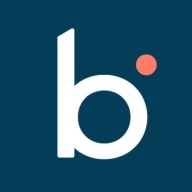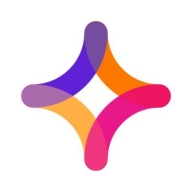


Find out what your peers are saying about Microsoft, Salesforce, SAP and others in Integration Platform as a Service (iPaaS).
We have automated complete order-to-cash processes for multiple customers, saving over 90 million dollars.
The return is faster since development efforts are minimized, allowing for quicker integration delivery.
The tech support is very good, offering immediate responses and chat options.
Seamlessly meeting SLAs and providing excellent responses to challenges and issues related to interface and data connectivity.
We receive service that is more than adequate, even exceptional.
The reason we wanted to use our own Kubernetes cluster was to do automatic scaling for utilized resources, allowing us to save.
We have built approximately 1,100 interfaces for one customer, which is a significant achievement.
We have not encountered many issues with remote engines, and the interfaces are properly developed.
With proper version control, you could know which version to revert to and test other versions.
The ETL aspect of Boomi iPaaS is not mature enough at the moment.
The integration landscape has become complex, and having a data strategy with unified data models would make integration easier for any platform, including Boomi.
Data management could also encompass APIs and real-time streaming data integration.
While pricing is relative, compared to others, it is favorable.
The pricing for Boomi iPaaS is reasonable, costing around $6,000 per year.
It provides automation for everything from order to cash, which is thoroughly documented, tracked, and streamlined within Boomi iPaaS.
The maturity of the product is significant.
The most valuable features of Boomi are the integration capabilities, the Data Hub product, and the UDI integration.
I have successfully requested the necessary patch from Talend support multiple times to align different studio versions across the team of developers.



The Boomi AtomSphere integration platform as a service (iPaaS) supports all your application integration processes – between cloud platforms, software-as-a-service applications, and on-premises systems. Your entire team has online access to a powerful range of integration and data management capabilities, that can be realized in a fraction of the time of legacy middleware technologies.
Jitterbit Harmony is a comprehensive platform for data integration and API management, enabling seamless synchronization and automation across cloud-based and on-premises applications.
Users leverage Jitterbit Harmony to integrate systems like ERP and CRM applications, simplifying complex data workflows and enhancing automation. It supports efficient data migration and ensures smooth connectivity, handling diverse integration needs and helping streamline business processes. Users emphasize its drag-and-drop functionality and extensive templates, which contribute to its robust performance. However, improvements are needed in data mapping, error message clarity, and documentation, especially when dealing with large data volumes.
What are the key features of Jitterbit Harmony?Companies across retail, manufacturing, healthcare, and finance sectors use Jitterbit Harmony to integrate critical applications and automate workflows. In retail, it connects inventory systems with sales platforms, reducing manual effort. Manufacturers sync their ERP systems with supply chain software, optimizing operations. Healthcare organizations integrate patient management systems with insurance databases, streamlining patient care. Financial institutions use it to connect accounting software with banking systems, ensuring real-time financial data exchange.